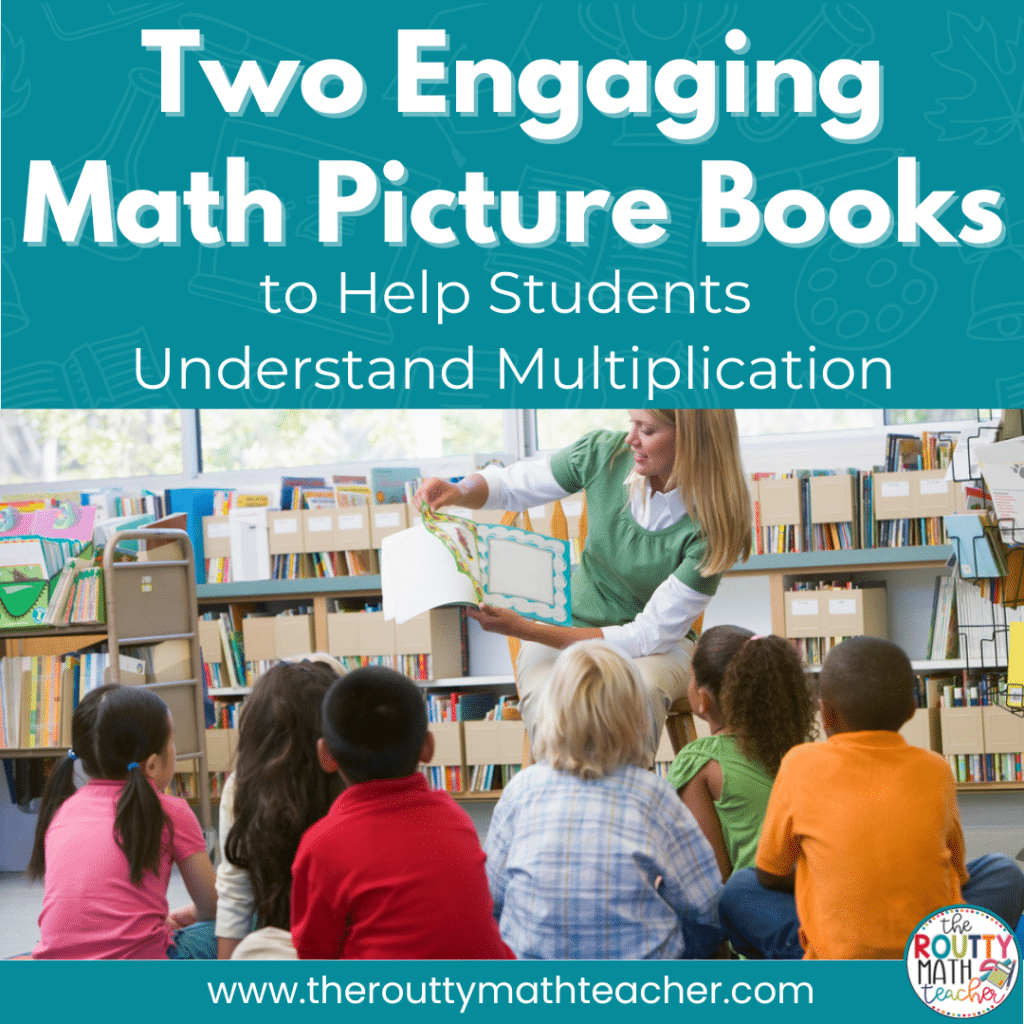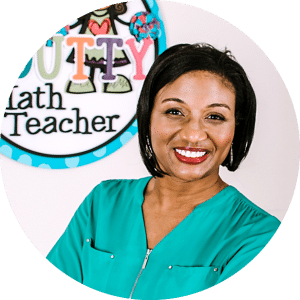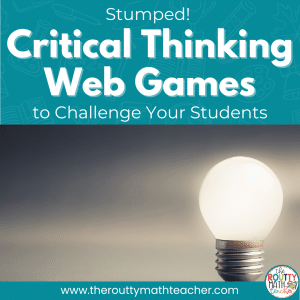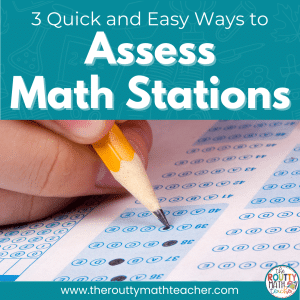Picture books are a great way to combine literacy and math. Using math picture books can help you engage students and reinforce math content and skills at the same time. In today’s post, I’m sharing two of my favorite multiplication picture books. I also offer ways to use them to support your students’ understanding of multiplication.
The first time I used a math picture book in my middle school math class, I worried they would hate it.
I knew they were too old to call down to the carpet to listen to the story, so I used PowerPoint to pre-recorded it, funny voices and all, so they could all see the pictures while they listened to the story from their desks.
Nervously, I started the video. How would they react?
Would they think I was treating them like babies?
But, they loved the story. That surprised me! And, more importantly, they were able to connect the story to the concept we were learning.
It was so brilliant! I couldn’t have been more excited.
Using Picture Books to Teach Math Skills
This certainly wasn’t the first time I had used a picture book to teach math, but it was the first time I used a picture book in my middle school classroom.
This experience taught me that all students enjoy listening to math stories and, when used intentionally, they can make powerful connections between the story and important math concepts.
Multiplication Picture Books
My college professor first introduced me to using math picture books to teach math. Once I started collecting them, I couldn’t stop. Over the years, my collection has grown to over 100 math picture books. I found a math picture book to teach many of the skills we teach in elementary school and several books that would work in middle school too.
Some of my favorite picture books to use are those that help reinforce basic math concepts, like multiplication and division. With this in mind, I have two engaging multiplication picture books to share with you.
![This is an example of an activity to reinforce the learning from multiplication picture books.]](https://www.therouttymathteacher.com/wp-content/uploads/2021/09/Amanda-Beans-Amazing-Dream-min.png)
Amanda Bean’s Amazing Dream
Book Synopsis:
In this story, we meet Amanda who likes to count anything and everything. In fact, she is so good at counting that she does not want to multiply. Over time though, and through a very vivid dream, she sees the power of multiplication. She also sees how multiplication can help her count faster. By the end of the book, she is so overwhelmed with trying to count everything that she wants to learn her multiplication facts.
Math Involved:
The format of the books builds the concept of looking at equal groups and using multiplication to find the total.
Questions to Ponder:
1. What is multiplication?
2. How is multiplication like addition? How is it different?
3. How could Amanda use multiplication to help her count the total amount instead of counting the items one by one?
Activity Ideas:
1. Return to the illustrations from the story and discuss ways to use multiplication to find the total for each set of items. Be sure to ask questions, such as “How many items are in one group?” and “How many in all?”
2. Help Amanda use multiplication to solve the problems she encountered throughout the story.
3. Create a list of things that come in groups on chart paper. Then, have students create problems such as: How many eggs are in 5 cartons? Students can use a windowpane, a large rectangle divided into four sections, to record the following: problem, illustration, number sentence in words, and an equation (problem and answer).
4. Compare the amounts in two different groups. For example, Which is more 3 tricycles or 5 bicycles?
Grab a free resource to use with Amanda Bean’s Amazing Dream using the form below!
![This is an activity to reinforce using arrays to understand equal groups multiplication.]](https://www.therouttymathteacher.com/wp-content/uploads/2021/09/One-Hundred-Hungry-Ants-min.png)
One Hundred Hungry Ants
Book Synopsis:
The story begins with one hundred ants marching in a line toward a picnic spot when the smallest ant stops the line to say they are moving way too slow. He suggests that a different arrangement is the better way to go. Again and again, the littlest ant stops the line to change the arrangement, but by the time they arrive at the picnic spot, the food is all gone. Then, all of the ants turn on the littlest ant and blame him for them moving way too slow and missing out on all of the yummies to fill their tummies.
Math Involved:
The format of the book illustrates the concept of arrays and allows students to determine all of the arrays that can be made with the factors for 100.
Questions to Ponder:
1. What were the ants trying to accomplish? Why?
2. What suggestions did the little ant make?
3. Which arrangement best helped them accomplish their goal? How do you know?
4. Were there any other arrangements they could have tried? How do you know?
Activity Ideas:
This book is a great introduction to the concept of arrays. Some of the activities that can be used to support the understanding of arrays and connect with the story include:
a. Recreate the arrays in the story and label them with a number sentence.
b. Give student groups different products and ask them to find the arrays that represent the number.
Additional activities that can be used to extend the concepts of the book include:
a. Give students different products (both prime and composite). Ask them to find the arrays that represent the number and create an illustrative poster. Then, use the posters to develop the concept of prime and composite numbers.
b. Use arrays as a method for creating lists of factors for a product.
c. Make conjectures about the “squareness” of the illustrated arrays and discuss the term “square number.” Be sure to discuss what a square number is (a number multiplied by itself) and how it is constructed (s equal rows of s).
d. Develop or reiterate the concept of area and perimeter. Determine the perimeter of the arrays and discuss how the shapes change when the perimeters are larger or smaller.
Grab a free resource to use with One Hundred Hungry Ants using the form below.
Ready to Start Teaching Multiplication?
Getting ready to teach multiplication? Consider using multiplication picture books to launch the learning and engage your students. Even if you work with upper elementary students learning about multiplying with larger numbers, you can use these books as a launch for exploring arrays with larger quantities.
These multiplication picture books can also remind students about the purpose of multiplication and why it is a useful skill. Both books can be read in a few minutes, so they are a great way to launch your lesson.
Sound Off!
What are your multiplication picture books? Respond in the comments below.






